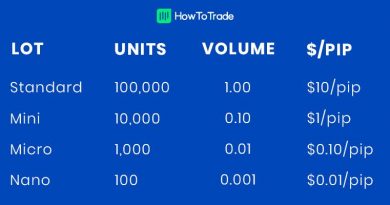Treasury Stock Treasury Shares Definition Use on Balance Sheets and Example
Treasury Stock: Definition, Use on Balance Sheets, and Example
What Is Treasury Stock?
Treasury stock, also known as treasury shares or reacquired stock, refers to previously outstanding stock bought back by the issuing company. The total number of outstanding shares decreases, but treasury stock is not included in dividend distribution or earnings per share (EPS) calculations.
Key Takeaways
- Treasury stock is formerly outstanding stock repurchased by the issuing company.
- Treasury stock reduces total shareholders’ equity on a company’s balance sheet, and it is a contra equity account.
- The cost method and the par value method are the two methods of recording treasury stock.
Understanding Treasury Stock
Treasury stock is a contra equity account recorded in the shareholders’ equity section of the balance sheet. It represents the shares repurchased from the open market and reduces shareholders’ equity by the amount paid for the stock.
In addition to not issuing dividends and not having voting rights, treasury shares may be limited by regulatory bodies. In the United States, buybacks are governed by the Securities and Exchange Commission (SEC).
Treasury stock can be retired or held for resale. Retired shares are permanently canceled and cannot be reissued. Non-retired treasury shares can be reissued through stock dividends, employee compensation, or capital raising.
Recording Treasury Stock
When a company issues stock, the balance sheet’s equity section increases through a credit to the common stock and additional paid-in capital (APIC) accounts. The common stock account reflects the share’s par value, while the APIC account shows the value received over the par value. The offsetting debit entry increases the company’s cash or other asset by the consideration received.
Treasury shares reduce total shareholders’ equity and are labeled as "treasury stock" or "equity reduction." The cost method and the par value method are the two methods of accounting for treasury stock. The cost method includes the repurchase value of the shares in the stockholders’ equity portion of the balance sheet. It is common for stocks to have a minimal par value, such as $1, but be repurchased for a higher price.
Under the cost method, repurchasing shares reduces total shareholders’ equity. If the treasury stock is later resold, the cash account is increased, and the treasury stock account is decreased, thereby increasing total shareholders’ equity. Depending on whether the stock was resold at a loss or gain, a treasury paid-in capital account is either debited or credited.
Under the par value method, repurchasing shares decreases total shareholders’ equity by the par value. The common stock APIC account is debited by the amount originally paid in excess of par value. The cash account is credited by the total cost of the share repurchase. The net amount is recorded as either a debit or credit, depending on the repurchase price.
Example of Treasury Stock
ABC Company initially sold 5,000 shares of common stock with a $1 par value for $41 per share. The company decided to repurchase 1,000 shares at $50, bringing the total value to $50,000.
The repurchase creates a treasury stock contra equity account. Under the cash method, the treasury account would be debited for $50,000, and cash would be credited for $50,000. Under the par value method, the treasury stock account would be debited for $1,000, common stock APIC would be debited for $49,000, and cash would be credited for $50,000.
In both methods, the total shareholders’ equity is decreased by $50,000. Assume ABC Company’s equity accounts totaled $500,000 before the share buyback. The repurchase brings the total shareholders’ equity down to $450,000.
Retired shares are repurchased treasury shares that are canceled and have no market value. They no longer represent a share of ownership and are not listed as treasury stock on financial statements.
What Is the Cost Method of Accounting for Treasury Stock?
The cost method values treasury stock based on the price paid to repurchase the shares rather than their par value. The cost of the treasury stock is listed in the stockholders’ equity portion of the balance sheet.
What Is the Par Value Method of Accounting for Treasury Stock?
The par value method values the stock acquired in a buyback based on its par value. This value is debited from the treasury stock account, reducing total shareholders’ equity. The common stock APIC account is debited by the excess paid by shareholders. The cash account is credited by the total cost of the share repurchase. The net amount is recorded as either a debit or credit, depending on the repurchase price.



